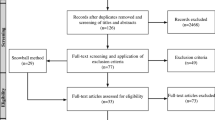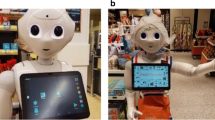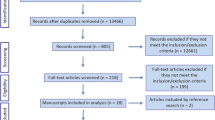Abstract
Perception of the fit between a person’s action capabilities and relevant environmental properties (i.e., affordances) is often fine tuned gradually through experience performing a behavior. However, the immediate effect of such practice on the improvement of affordance perception is unclear. The present study was designed to examine whether a critical factor in the immediate effect of such practice is the opportunity to detect very fine differences between possible and impossible behaviors [i.e., high-resolution (HR) practice]. Participants reported whether apertures of various widths were passable when walking while holding a 69-cm horizontal bar (Experiment 1) or when using a wheelchair (Experiment 2). When practicing passing through apertures, seven different aperture widths, including their minimum passable width (70 cm for both experiments) were presented around the affordance boundary with 1- or 5-cm increments for the HR or low-resolution (LR) conditions, respectively. Accuracy of perception of passability improved following both HR and LR practice when walking. In contrast, no improvement was observed in any condition when using a wheelchair. These findings suggest that the immediate effect of practice was mediated by the form of locomotion but not the resolution of the practice.




Similar content being viewed by others
References
Adolph KE (1997) Learning in the development of infant locomotion. Monogr Soc Res Child Dev 62:1–164
Adolph KE (2000) Specificity of learning: why infants fall over a veritable cliff. Psychol Sci 11:290–295
Adolph K (2008) Learning to move. Curr Direct Psychol Sci 17:213–218
Adolph KE, Tamis-LeMonda CS, Ishak S, Karasik LB, Lobo SA (2008) Locomotor experience and use of social information are posture specific. Dev Psychol 44:1705–1714
Burton G (1992) Nonvisual judgment of the crossability of path gaps. J Exp Psychol Hum Percept Perform 18:698–713
Butler AA, Lord SR, Fitzpatrick RC (2011) Reach distance but not judgment error is associated with falls in older people. J Gerontol A Biol Sci Med Sci 66:896–903
Cole WG, Chan GL, Vereijken B, Adolph KE (2013) Perceiving affordances for different motor skills. Exp Brain Res 225:309–319
Franchak JM, van der Zalm DJ, Adolph KE (2010) Learning by doing: action performance facilitates affordance perception. Vision Res 50:2758–2765
Franchak JM, Celano EC, Adolph KE (2012) Perception of passage through openings depends on the size of the body in motion. Exp Brain Res 223:301–310
Gibson JJ (1979) The ecological approach to visual perception. Houghton Mifflin, Boston
Grechkin TY, Chihak BJ, Cremer JF, Kearney JK, Plumert JM (2013) Perceiving and acting on complex affordances: how children and adults bicycle across two lanes of opposing traffic. J Exp Psychol Hum Percept Perform 39:23–36
Higuchi T, Takada H, Matsuura Y, Imanaka K (2004) Visual estimation of spatial requirements for locomotion in novice wheelchair users. J Exp Psychol Appl 10:55–66
Higuchi T, Hatano N, Soma K, Imanaka K (2009) Perception of spatial requirements for wheelchair locomotion in experienced users with tetraplegia. J Physiol Anthropol 28:15–21
Higuchi T, Murai G, Kijima A, Seya Y, Wagman JB, Imanaka K (2011) Athletic experience influences shoulder rotations when running through apertures. Hum Mov Sci 30:534–549
Hirose N, Nishio A (2001) The process of adaptation to perceiving new action capabilities. Ecol Psychol 13:49–69
Jiang Y, Mark LS (1994) The effect of gap depth on the perception of whether a gap is crossable. Percept Psychophys 56:691–700
Kadar EE, Shaw RE (2000) Toward an ecological field theory of perceptual control of locomotion. Ecol Psychol 12:141–180
Kretch KS, Adolph KE (2013) Cliff or step? Posture-specific learning at the edge of a drop-off. Child Dev 84:226–240
Lee AC, Harris JP, Atkinson EA, Fowler MS (2001) Disruption of estimation of body-scaled aperture width in Hemiparkinson’s disease. Neuropsychologia 39:1097–1104
Linkenauger SA, Lerner MD, Ramenzoni VC, Proffitt DR (2012) A perceptual-motor deficit predicts social and communicative impairments in individuals with autism spectrum disorders. Autism Res 5:352–362
Mark LS (1987) Eyeheight-scaled information about affordances: a study of sitting and stair climbing. J Exp Psychol Hum Percept Perform 13:361–370
Mark LS, Balliett JA, Craver KD, Douglas SD, Fox T (1990) What an actor must do in order to perceive the affordance for sitting. Ecol Psychol 2:325–366
Plumert JM, Kearney JK, Cremer JF (2004) Children’s perception of gap affordances: bicycling across traffic-filled intersections in an immersive virtual environment. Child Dev 75:1243–1253
Ramenzoni V, Riley MA, Davis T, Shockley K, Armstrong R (2008) Tuning into another person’s action capabilities: perceiving maximal jumping-reach height from walking kinematics. J Exp Psychol Hum Percept Perform 34:919–928
Ramenzoni VC, Davis TJ, Riley MA, Shockley K (2010) Perceiving action boundaries: learning effects in perceiving maximum jumping-reach affordances. Atten Percept Psychophys 72:1110–1119
Robinovitch SN, Cronin T (1999) Perception of postural limits in elderly nursing home and day care participants. J Gerontol A Biol Sci Med Sci 54:B124–B130 (discussion B131)
Sakurai R, Fujiwara Y, Ishihara M, Higuchi T, Uchida H, Imanaka K (2013) Age-related self-overestimation of step-over ability in healthy older adults and its relationship to fall risk. BMC Geriatr 13:44
Schmidt RA, Lee D (1999) Motor control and learning: a behavioral emphasis, 3rd edn. Human Kinetics, Champaign
Snapp-Childs W, Bingham GP (2009) The affordance of barrier crossing in young children exhibits dynamic, not geometric, similarity. Exp Brain Res 198:527–533
Stoffregen TA, Yang C, Giveans R, Flanagan M, Bardy BG (2009) Movement in the perception of an affordance for wheelchair locomotion. Ecol Psychol 21:1–36
Wagman JB (2012) Perception of maximum reaching height reflects impending changes in reaching ability and improvements transfer to unpracticed reaching tasks. Exp Brain Res 219:467–476
Wagman JB, Malek EA (2007) Perception of whether an object can be carried through an aperture depends on anticipated speed. Exp Psychol 54:54–61
Wagman J, Malek EA (2008) Perception of affordances for walking under a barrier from proximal and distal points of observation. Ecol Psychol 20:65–83
Wagman JB, Morgan LL (2010) Nested prospectivity in perception: perceived maximum reaching height reflects anticipated changes in reaching ability. Psychon Bull Rev 17:905–909
Wagman JB, Taylor KR (2005) Perceiving affordances for aperture crossing for the person-plus-object system. Ecol Psychol 17:105–130
Wagman JB, McBride DM, Trefzger AJ (2008) Perceptual experience and posttest improvements in perceptual accuracy and consistency. Percept Psychophys 70:1060–1067
Warren WHJ (1998) Visually controlled locomotion: 40 years later. Ecol Psychol 10:177–219
Warren WHJ, Whang S (1987) Visual guidance of walking through apertures: body-scaled information for affordances. J Exp Psychol Hum Percept Perform 13:371–383
Yu Y, Stoffregen TA (2012) Postural and locomotor contributions to affordance perception. J Mot Behav 44:305–311
Yu Y, Bardy BG, Stoffregen TA (2011) Influences of head and torso movement before and during affordance perception. J Mot Behav 43:45–54
Author information
Authors and Affiliations
Corresponding author
Rights and permissions
About this article
Cite this article
Yasuda, M., Wagman, J.B. & Higuchi, T. Can perception of aperture passability be improved immediately after practice in actual passage? Dissociation between walking and wheelchair use. Exp Brain Res 232, 753–764 (2014). https://doi.org/10.1007/s00221-013-3785-9
Received:
Accepted:
Published:
Issue Date:
DOI: https://doi.org/10.1007/s00221-013-3785-9




